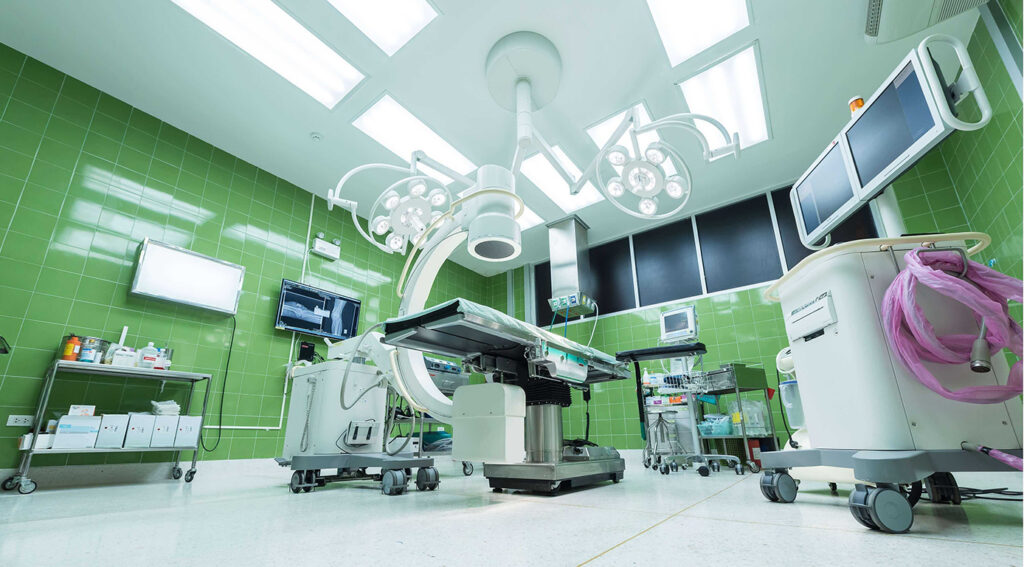This article originally appeared in the July/August 2022 issue of ISSA Today
by Eric Blaeser — Hospitals are busy, bustling environments, especially emergency departments that see hundreds of visitors around the clock every day of the year. If that wasn’t enough, the situation has been made even worse by the COVID-19 pandemic, with many clinics overwhelmed by an unprecedented number of patients as services reopen. In the United States alone, 10% of hospitals were classified as being under “high levels of extreme stress” during the period of March 4-10.1
In this hectic health care environment, it is more important than ever that cleanliness is a top priority. In fact, hospitals are arguably the places where this matters the most due to the nature of their day-to-day activities. Surfaces such as door handles, shelves, privacy curtains, and medical equipment are constantly touched, making them dirty and allowing microbes to grow, even if they are rigorously cleaned on a daily basis.
However, it is hard to achieve thorough, durable cleanliness, especially with the current increase in footfall. Wiping a surface using an appropriate cleaning solution will certainly make it clean, but the effect will last only a short time, and as soon as it is touched, it will become dirty again. A nonstop stream of visitors makes it challenging to wipe down every area or object immediately after being touched. This is where antimicrobial technology can lend a helping hand, supplementing regular cleaning protocols and providing a longer-lasting effect.
Complementing regular cleaning protocols
Built-in antimicrobial product protection can prolong the cleanliness of treated surfaces when used in tandem with regular cleaning, helping to prevent the unwanted growth of microbes. Incorporating these technologies into the material will provide long-term product protection that works around the clock to help keep it clean. In addition, since microbial growth can lead to premature degradation by creating foul-smelling odors and stains, this will also prolong the lifetime of the product.
Antimicrobial chemistries come in many different forms, including pellets, powders, or liquid formulations, and can be used in building materials, flooring, ceramics, carpeting, and other textiles. Since the antimicrobial treatment does not wash off, wear away, or leach out of the product, surfaces stay cleaner between cleanings, enhancing both durability and serviceable lifetime.
Clean and practical
Privacy curtains and shelves are just two examples within health care where antimicrobial product protection can really benefit the setting. As the name suggests, privacy curtains are used to give people a sense of seclusion in a potentially very public space. But, as they are often touched by both patients and members of staff, they do not stay fresh for long and can quickly develop odors. Single-use products or excessive laundering can help curb the issue. However, long-lasting freshness can be achieved with the help of antimicrobial technology.
The same principles apply to shelves. They can be wiped down every single day, but as soon as they are touched, they can no longer be classified as clean. Needless to say, if a shelf is unclean, everything in contact with it will become dirty too. Antimicrobial chemistries incorporated into the raw material, together with proper cleaning routines, will keep the shelves clean and give the staff extra peace of mind.
Summary
Keeping hospitals cleaner as we emerge from a pandemic is not an easy task. The unprecedented number of patients means that surfaces will get dirty far more frequently and quicker than before, and conventional cleaning routines might not be enough to keep on top of that. Complementing regular cleaning protocols with built-in antimicrobial technology will keep the surfaces cleaner between cleanings and suppress the growth of microbes 24/7. This will not only help hospitals achieve desired cleanliness levels, but will also ultimately increase the usable lifetime of treated products.
Eric Blaeser is the senior director of Business Development at Microban, overseeing all business activity in the Americas. Over the last 30 years, he has worked in both a commercial and engineering capacity in industries such as packaging, commodity chemicals, and fiber production, with category-leading organizations including Celanese, Fiber Industries, and Wellman. Blaeser earned his bachelor’s degree in Chemical Engineering from Georgia Institute of Technology and his MBA from Queens University of Charlotte.
References
1 https://www.npr.org/sections/health-shots/2020/12/09/944379919/new-data-reveal-which-hospitals-are-dangerously-full-is-yours?t=1647869045350

